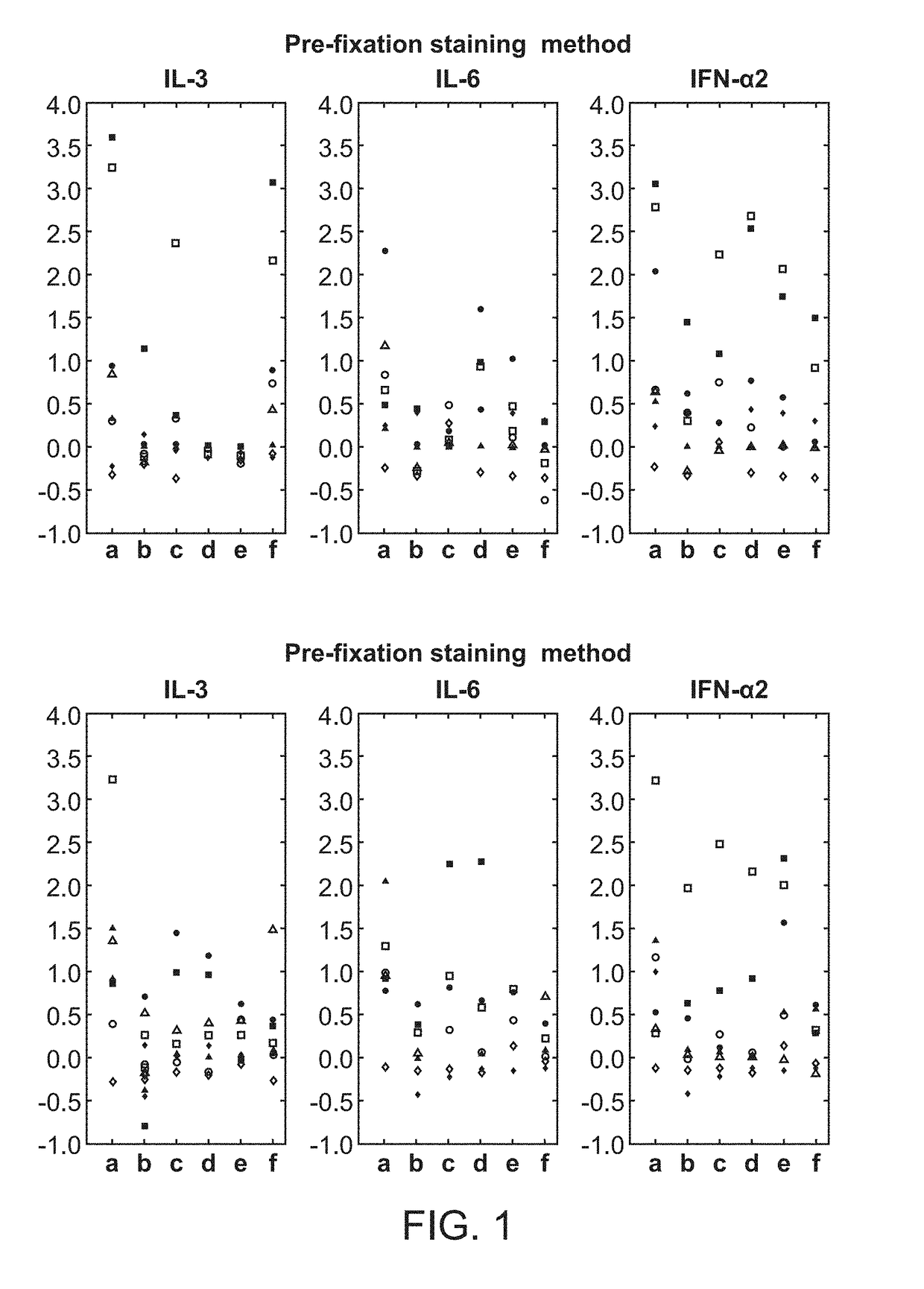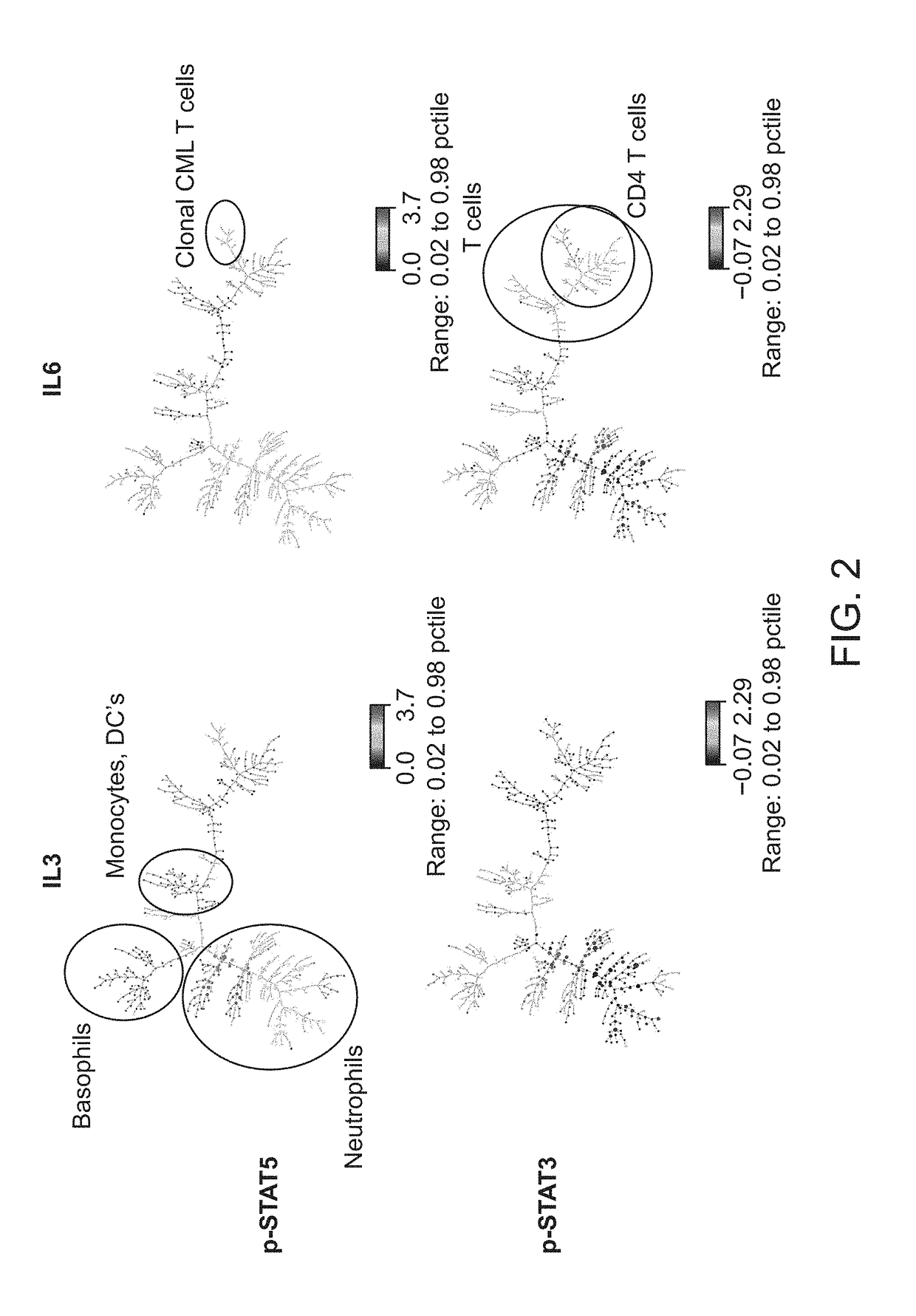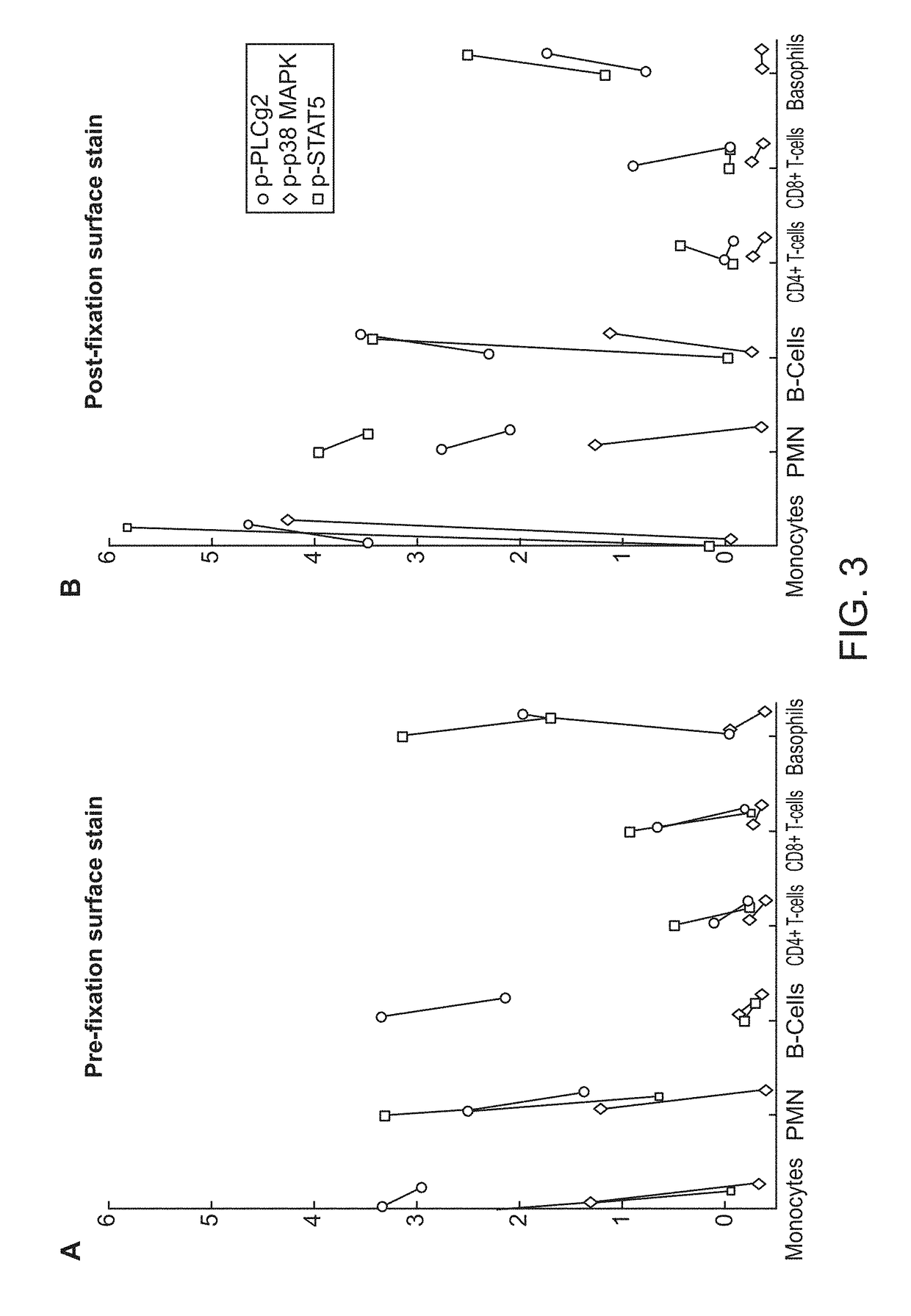Cell-specific signaling biomarker analysis by high parameter cytometry; sample processing, assay set-up, method, analysis
a cell-specific signaling and high-parameter cytometry technology, applied in material analysis, biological material analysis, instruments, etc., can solve the problems of phospho-flow assays, which have typically been performed by fluorescent flow cytometry (fcm), can be difficult to interpret data, and the set-up of compensation settings can be often time-consuming and labor-intensive. achieve the effect of facilitating data interpretation and facilitating interpretation of high-parameter datasets
- Summary
- Abstract
- Description
- Claims
- Application Information
AI Technical Summary
Benefits of technology
Problems solved by technology
Method used
Image
Examples
example 1
Materials and Methods
[0148]A fresh whole blood sample from a 54-year-old adult male patient with chronic-phase chronic myelogenous leukemia (CML) who presented with neutrophilic leukocytosis with a total WBC: 33.3 K / □l (PMN: 17.98 K / □l, Lymphocytes: 3.66 K / □l, Monocytes: 0.33 K / □l, Eosinophils: 0.67 K / □l, Basophils: 4.0 K / □l, immature granulocytes: 6.3 K / □l, Blasts: 0.33 K / □l), Hb: 15.8 g / dL, Hct: 47.9%, and PLT: 536 K / □l was obtained from UCSF Helen Diller Family Comprehensive Cancer Center with informed consent. Cell-specific cytokine-induced effects in the leukemic v. normal state were compared. The sample was exposed to: IL3 (50 ng / ml), IL6 (50 ng / ml), IFN□2 10,000 IU / ml or no stimulus, for 15 min at 37° C.
[0149]Using the pre-fixation surface staining method, the modulated samples were then contacted with a cocktail of antibodies towards surface antigens for 15 minutes on ice, followed by fixation with Phosflow Lyse / Fix reagent (BD Biosciences, San Jose, Calif.) 10 minutes at 37...
example 2
Materials and Methods
[0161]A 74 y / o male who had been treated for CML with a BCR-ABL1-targeted tyrosine kinase inhibitor for eight years presented with early molecular relapse after stopping treatment. The complete blood count was: WBC of 7.9K / ul (PMN: 3.43, lymph: 3.41, mono: 0.82), and PLT: 177K / uL, and normal Hgb. BCR-ABL1 p210: 0.285 IS. The unmodified (baseline) whole blood sample obtained with informed consent was fixed in the BD Phosflow lyse / fix buffer 4 hours post-collection, washed with wash buffer, and stained with a panel of metal-conjugated antibodies. Surface staining was performed with antibodies against 1) marker of immaturity (CD34-173Yb), 2) lineage-determining antigens: CD4-145Nd, CD20-147Sm, CD15-148Nd, CD7-149Sm, CD3-150Nd, CD45-154Sm, CD19-156Gd, CD11c-159Tb, CD14-160Gd, CD16-166Er, CD24-168Er, CD8a-170Er, CD66-171Yb, CD56-175Lu, CD33-176Yb; 3) activation- and maturation-associated antigens: CD27-152Sm, CD45RA-153Eu, IgD-161Dy, CD38-167Er, HLA-DR-174Yb; and 4) ...
example 3
[0170]This example, generally depicted in FIG. 14, demonstrates a prophetic panel of markers that contains a combination of surface and IC signaling markers, and additional optional panels of surface markers. The signaling biomarker signature could identify cell type(s) of interest based on analysis of fixed cells in one tube or assay. The surface marker profile and relative proportions of these cell types can be obtained through analysis of live cells in the additional other tubes or assay(s). Independent or integrated analysis of data acquired by each of the methods and extrapolation would be preferable to profile a particular cell subpopulation. For instance, the surface marker expression profile of a target cell subpopulation, initially identified by a certain set of IC attributes: [i1 (−), i2 (+++), i3 (−), i4 (++), i5 (+++)], can be derived by testing a limited set of antibodies measuring a small set of surface attributes on a fixed sample, and an extensive surface marker anal...
PUM
| Property | Measurement | Unit |
|---|---|---|
| wavelengths | aaaaa | aaaaa |
| wavelengths | aaaaa | aaaaa |
| wavelengths | aaaaa | aaaaa |
Abstract
Description
Claims
Application Information
 Login to View More
Login to View More - R&D
- Intellectual Property
- Life Sciences
- Materials
- Tech Scout
- Unparalleled Data Quality
- Higher Quality Content
- 60% Fewer Hallucinations
Browse by: Latest US Patents, China's latest patents, Technical Efficacy Thesaurus, Application Domain, Technology Topic, Popular Technical Reports.
© 2025 PatSnap. All rights reserved.Legal|Privacy policy|Modern Slavery Act Transparency Statement|Sitemap|About US| Contact US: help@patsnap.com



